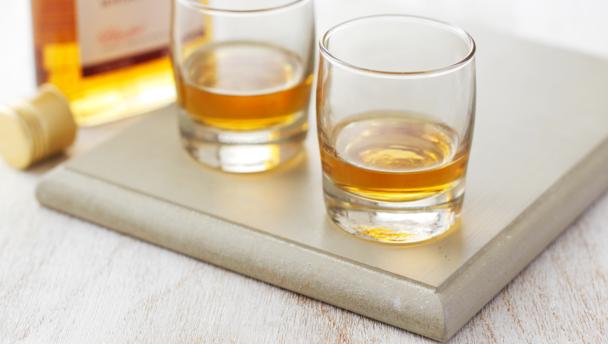

Whisky is one of the oldest spirits in the world. As well as being a favourite drink in the UK, it has earned a place in the hearts of spirit drinkers all over the world. All you have to do is stick your nose into a glass of it and sniff, and it brings your senses alive with a host of aromas: wood-smoke, peat, sea air, honey, fresh, green leaves, tea, even iodine - the list is endless. And much of that complexity comes from how it is made.
Essentially there are two basic types of whisky: grain whisky and single-malt whisky. A blended whisky is made from a mixture of malt whisky and grain whisky, with the latter being the largest element. Single-malt whisky is made using the more expensive barley, which is 'malted' (essentially, roasted by a peat-fuelled fire) before fermentation and distillation. Irish whisky is made with barley alone, but not all of it is malted - leaving a lighter and milder flavour. Grain whisky (including American and Canadian whiskeys) is made using wheat or maize with a small proportion of malted barley. Every type of whisky has variations in the distillation and storage which give each its unique character.
 Spiced soy roast chicken
Spiced soy roast chicken
 Roast peppered beef with bourbon mustard and all the trimmings
Roast peppered beef with bourbon mustard and all the trimmings
 Barbecue baby back ribs with celeriac slaw
Barbecue baby back ribs with celeriac slaw
 Whisky and chilli tiger prawns
Whisky and chilli tiger prawns
 Whisky-cured salmon with beetroot and blinis
Whisky-cured salmon with beetroot and blinis
 Haggis bhajis
Haggis bhajis
 Christmas cake with pecan marzipan and brandy butter icing
Christmas cake with pecan marzipan and brandy butter icing
 Mac daddy
Mac daddy
 Old-fashioned whisky cocktail
Old-fashioned whisky cocktail
 Homemade Irish cream
Homemade Irish cream
 Christmas cocktail
Christmas cocktail
Single-malt whiskies (often just called 'malts') are whiskies made purely of malted barley. What makes them special and so distinctive is where they come from and how they are distilled. So, for example, a malt from the island of Islay will be quite briney, almost salty, while a Speyside malt will be slightly sweeter and more delicate. A malt from the likes of Deeside will be slightly more smoky and a little more peaty. The ageing process helps to accentuate each single-malt whisky's individual characteristics. A blended whisky, conversely, is a mix of some mature malts, along with some very young grain whisky.
As with wine, it takes time to get to know the complexities and personalities of different types of whisky, particularly single-malts.
Whisky is best enjoyed on a cold night. The addition of (room-temperature) water is said to enhance the flavour of single malts. Bourbon is often served on ice.
It is used to flavour some classic dishes such as the Scottish dessert cranachan. The sweeter, vanilla-flavoured American bourbons are suited to cakes and desserts (as an alternative to brandy).
Type the ingredients you want to use, then click Go. For better results you can use quotation marks around phrases (e.g. "chicken breast"). Alternatively you can search by chef, programme, cuisine, diet, or dish (e.g. Lasagne).